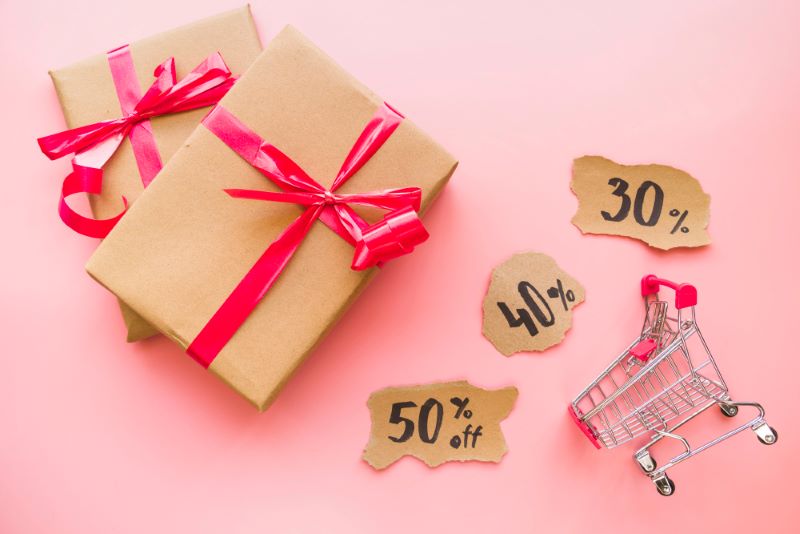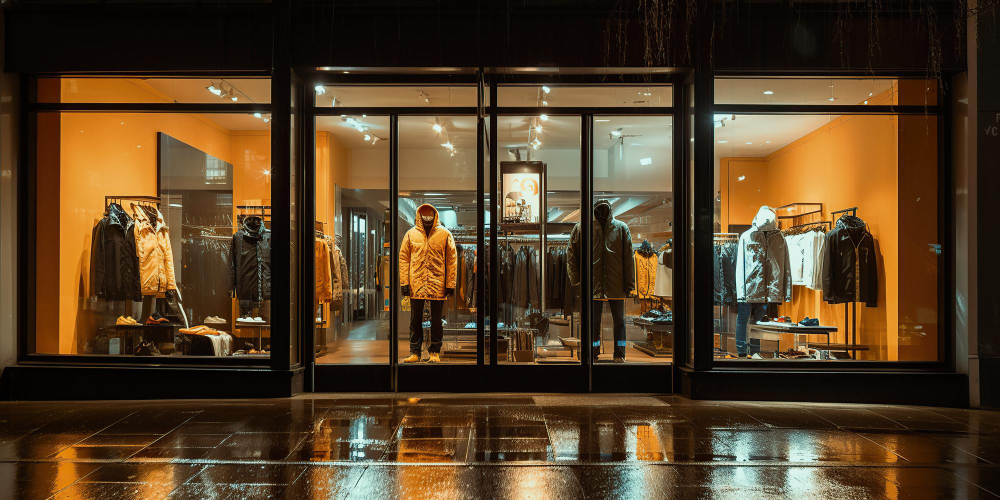Retail Analytics (5 Ways To Use Retail Data Web Scraping)

Retail is the link between manufacturers and end-users, as well as the lifeline of any manufacturing industry. Without retailers, getting products to the end-users is simply impossible. However, retail can be quite a thankless gig. Building a brand as a retailer is very hard because of the simple fact that you do not own the products you sell. When you sell a product and performs well, the manufacturer gets the praise, not the retailer. Also, the retail industry is crowded. For every manufacturer, there are thousands, maybe tens of thousands of retailers, making the industry very competitive. You can’t survive as a retailer by merely selling products. You need a way to get an edge over your competitors, and that is where retail analytics comes in.
Retail analytics is data analytics for the retail industry. Regardless of what you sell and where you sell it, online or offline, you have probably at one time or the other bemoaned your inability to properly monitor the market. Or the fickleness of consumers. Or the headaches of the supply chain. Or the fact that your cat got in the warehouse and ate a couple of packs of Cheetos (do cats eat Cheetos?). And you have wondered how you can solve these problems and get an edge on your competitors? Well, retail analytics is the answer. It is how you use industry, consumer, and personal business data to solve the above problems (except for the Cheetos-eating cat).
But to successfully implement retail business analytics, you need data. And to easily and efficiently collect data, you need a specialized means of data collection. In other words, you need web scraping.
This article will take a more in-depth look at how retail analytics work, the importance of retail, and how you can use web scraped data for retail analysis. Feel free to use the table of contents to navigate to the section that most interests you.
Table of Contents
What Is Retail Analytics?

Retail analytics uses industry data to gain insights into sales processes, inventory calculations, supply chain movements, customer preferences, and other insights necessary for effective decision-making in the retail industry. In other words, retail analytics tells you what is going on in the industry, and it informs you about the best decisions to make to position your retail business for maximum profit.
Essentially, retail analytics uses data to gain insights into industry trends and inform effective business decisions. However, that is not all it is. The retail industry is vast. To effectively compete, you need to know what people (competitors and consumers) have done, what they are doing, and what they will do. The retail analysis field covers not just how to collect data but also how to use it and what to use it for. Retail business analytics allow you to leverage data-driven insight from your business and your customers to improve the customer experience, increase your sales, and optimize operations. In other words, it allows you to use data on consumers’ past and current preferences to optimize your service and provide the absolute best customer experience. Now that we know what retail analytics is, let’s look at why data is so important in the retail industry.
The Importance of Retail Data

Data is important. In whatever business or industry you happen to be in, you need data to survive. However, the need for data in the retail sector exceeds the norm. To know who the customers are and what they want, find what they want, arrange the supply chain to get it to them, obtain feedback on what they have purchased, and basically to do anything in the retail industry, you need data.
If you have ever tried to run a retail business on guesses and intuition alone, you will have discovered one inevitable truth. You can’t make any purposeful decision in retail without data—lots of it. The primary reason for this is the sheer variety of the industry. To know who is selling what, where they are selling it, how much they are selling it for, and more, you need data. But more than that, to successfully make use of this data, you have to combine it with more data on what the customers want, where they are looking for it, and how much they are willing to pay for it. In the simplest of terms, you can’t run a retail business without data. However, you might come across a little problem when trying to implement retail analytics, and that is how to collect data. Data is the lifeblood of analytics. Due to the retail industry’s size and diversity, managing data can be very tedious, even with many resources.
So how do you get this data? The volume of data produced in the industry is such that you cannot successfully collect and analyze it manually. You need a specialized data collection method to parse the data successfully. This is where web scraping comes in.
How to collect data for retail analytics with web scraping
Web scraping is the act of collecting data from the internet (something we all do at a minuscule level). By using web scraping bots, however, this process can be automated and scaled up to collect data in large volume with minimal manual effort. Web scraping bots work by crawling through a given web page’s source code and extracting data according to some preset parameters. With the aid of technologies such as APIs and multiple proxies, these bots can collect data from an unlimited number of webpages in real-time without needing continual input. This means that you can collect all the data you need in the retail industry when you need it. Now let’s talk about how to use web scraping for retail analytics.
5 Ways You Can Use Web Scraping for Retail Data Analytics

There are numerous ways to take advantage of web scraping bots’ unique data collection ability for retail analytics. Let’s take a look at five of them.
Collect data on your retail competitors
With web scraping, you can easily collect data on your competitors and their business tactics. And you can then use this data to inform your tactics and get an edge over them. You can also scrape data on their customers and look for hints of dissatisfaction that you can leverage to bring their customers over to your business. The easiest way to know what is going on in your industry is to monitor what the competition is doing. Web scraping gives a very efficient way to do this. You can localize your scraping tool to provide you with data on your competition in a particular region. For example, if you are looking to expand your business into a new city, you can use web scraping to collect data on all the people already selling what you sell in that city. By comparing their networks and popularity, you can quickly identify who your biggest competitor is and work out a plan to beat them.
Develop a competitive retail pricing strategy
Amazon is currently the largest online marketplace on the internet. If you are selling something, chances are you’ll find people selling that same thing on Amazon. And also on platforms like eBay and Flipkart. According to research, about 80% of shoppers check prices online and make some kind of price comparison before making a purchase. If your customers are doing this, then there is no reason why you shouldn’t be doing it too. With web scraping, you can easily collect the retail pricing data of a particular product at the click of a button, check the trend of fluctuations in the price over time, and use this to develop a competitive pricing strategy that gives an edge over competitors without hurting your bottom line.
Monitor and analyze consumer trends in the retail industry
If there is one universal truth about consumers, it is that they always follow trends, and if a trend has happened once, it will probably happen again. With web scraping, you can easily collect data on past and present consumer trends and use this data to predict future trends. You can also scrape for data on current and potential influencers that can shift the direction of consumer trends. By keeping an eye on these influencers, you easily and quickly react to any new trend that pops up. Web scraping is the best way to implement an efficient retail customer analytics plan.
Collect feedback data from platforms and online forums
As a retailer, feedback is an essential part of your business. Feedback from your customers tells you what you are doing right and what you need to improve. Even better (or worse), it gives your potential customers this information too. With web scraping, you can efficiently collate all your customers’ feedback from a platform like Amazon and analyze them for the pros and cons of your business as they see it. You can also scrape your competitors’ feedback data to see what their customers are saying about them. This allows you to copy their good tactics and improve on their bad tactics in your own business. It enables you to improve without making your own mistakes.
Optimize and maximize your inventory options
By scraping data on actual consumer needs, rather than using intuition to guess imaginary consumer needs, you can optimize your inventory to eliminate wastage and make sure you are only stocking products that people actually want.
Take Advantage of Big Data in Retail With Scraping Robot

Our scraping service makes use of APIs so you can collect data in real-time and automate your scraping process. We also make use of multiple proxies so you can send as many scraping requests as you want.
If you choose to do some DIY scraping, you get 5000 free scrapes when you sign up for our scraping service. And every scrape after that costs only $0.0018 (ain’t that awesome?).
Conclusion
The retail industry can be a very tough nut to crack without the necessary tools. Retail analytics supply all the tools you need to crack the industry. And at Scraping Robot, we supply all the retail big data you need to fuel analytics in retail industry.
The information contained within this article, including information posted by official staff, guest-submitted material, message board postings, or other third-party material is presented solely for the purposes of education and furtherance of the knowledge of the reader. All trademarks used in this publication are hereby acknowledged as the property of their respective owners.
